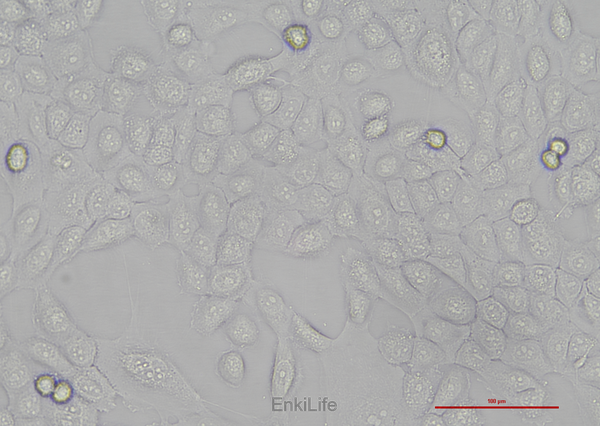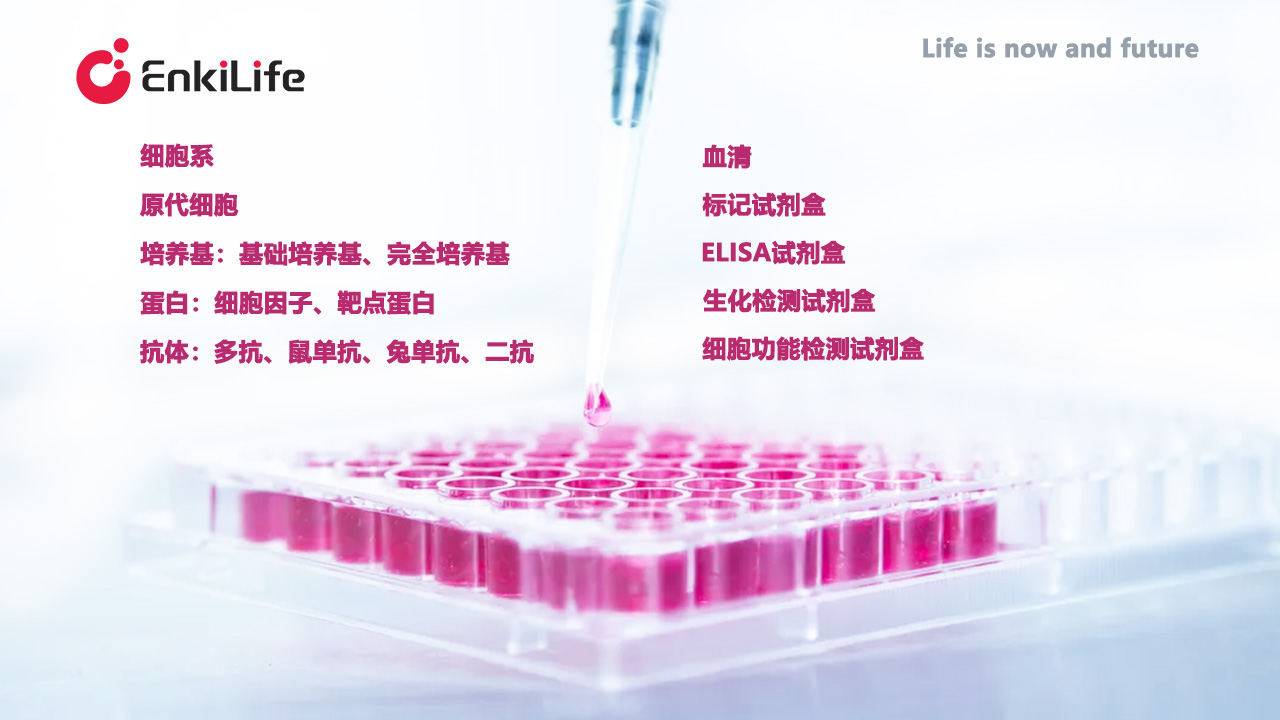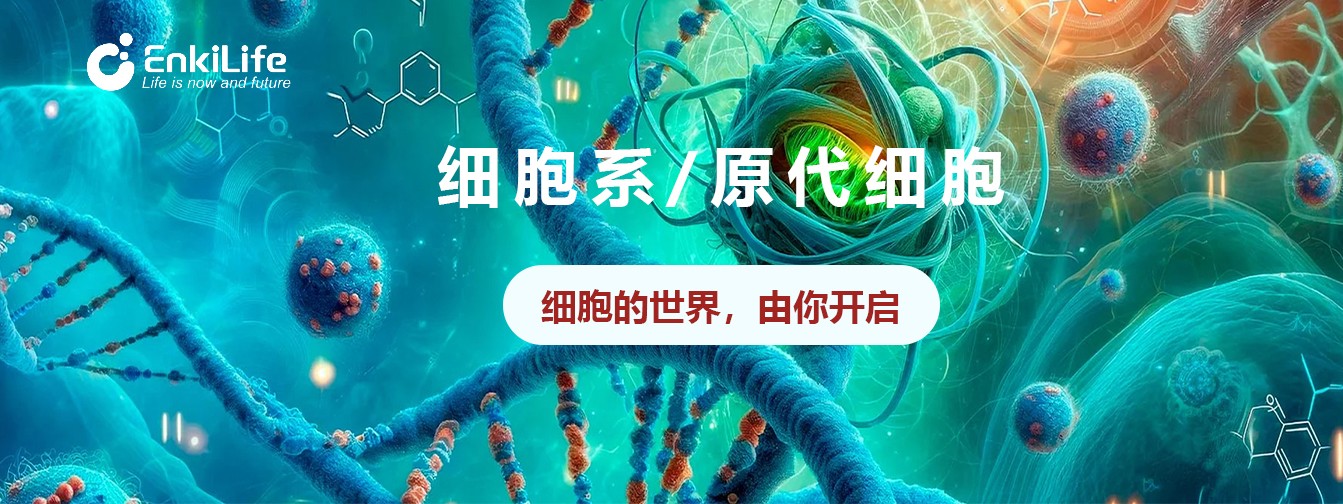人口腔鳞癌细胞HSC-3
发表时间:2025-07-15
人口腔鳞癌细胞HSC-3
一. 细胞起源
1.起源:HSC-3细胞系源自舌部转移性口腔鳞状细胞癌(OSCC)患者的淋巴结转移灶,具有高度侵袭性和转移潜能[1]。
2.分子特征:基因组分析显示其存在染色体3q、8q、11q13区域增益及18q丢失,与原发肿瘤一致;CTTN基因扩增与淋巴结转移相关[1]。
二. 生物学特性
1.增殖与凋亡:
2.转移与侵袭:
3.信号通路:
4.氧化应激:线粒体ROS水平升高,易受吸烟诱导损伤[9]。
三. 培养与储存
1.培养条件:常规使用DMEM或RPMI-1640培养基(含10%胎牛血清),37℃、5% CO?环境培养[10][11]。
2.冻存方法:液氮冻存(含10% DMSO的冻存液),复苏存活率>80%[1]。
四. 研究应用领域
1.药物筛选平台:用于天然化合物(如mecambridine、硒化二氢杨梅素)及纳米药物的抗癌效应评价[2][12]。
2.肿瘤微环境研究:模拟基质细胞(巨噬细胞、间充质干细胞)对OSCC进展的调控[6][13]。
3.转移机制模型:研究EMT、骨侵袭及淋巴结转移的分子机制[1][5]。
五. 近年研究进展
1.靶向治疗:
2.微环境调控:
3.单细胞技术:单细胞测序揭示癌前病变进展机制,为早期干预提供靶点[15]。
六. 局限性与克服方法
1.局限性:
2.克服方法:
七. 总结与展望
HSC-3细胞系是研究OSCC转移机制及药物开发的关键模型。未来需聚焦:
1.精准靶向:基于HSC-3特异性标志物(如CTTN)设计靶向疗法[1]。
2.微工程模型:开发3D生物打印或类器官芯片模拟肿瘤微环境[16][15]。
3.免疫联合治疗:探索TAMs(肿瘤相关巨噬细胞)调控策略以阻断转移[13]。
参考文献
1. Cytogenetic, genomic, and epigenetic characterization of the HSC-3 tongue cell line with lymph node metastasis. Ribeiro IP, et al. Oral Oncol. 2018;78:158-164. [PMID: 29477379]
2. Mecambridine induces potent cytotoxic effects, autophagic cell death and modulation of the mTOR/PI3K/Akt signaling pathway in HSC-3 oral squamous cell carcinoma cells. Lin N, et al. Oncol Rep. 2017;38(5):3139-3146. [PMID: 29048627]
3. Curcumin analog HO‐3867 triggers apoptotic pathways through activating JNK1/2 signalling in human oral squamous cell carcinoma cells. Chen CW, et al. J Cell Mol Med. 2022;26(4):1131-1141. [PMID: 34994032]
4. Anticancer Effect of Ursodeoxycholic Acid in Human Oral Squamous Carcinoma HSC-3 Cells through the Caspases. Pang L, et al. Nutr Cancer. 2015;67(5):765-779. [PMID: 259423910.
5. Shan Q, Takabatake K, Omori H, et al. Stromal cells in the tumor microenvironment promote the progression of oral squamous cell carcinoma. Oral Dis. 2021. PMID: 34355421]
6. Significance of cancer stroma for bone destruction in oral squamous cell carcinoma using different cancer stroma subtypes. Shan Q, et al. Int J Mol Sci. 2022;23(5):2469. [PMID: 35269581]
7. XAV939: from a small inhibitor to a potent drug bioconjugate when delivered by gold nanoparticles. Afifi MM, et al. Bioconjug Chem. 2014;25(2):255-258. [PMID: 24456509]
8. Hyaluronan synthase 3 mediated oncogenic action through forming inter-regulation loop with tumor necrosis factor alpha in oral cancer. Kuo YZ, et al. Oncotarget. 2017 Feb 28;8(9):15563-15583. [PMID: 28107185]
9. 南京大学医学院附属口腔医院. 线粒体靶向活性肽SS-31抑制吸烟诱导的氧化应激损伤. 中华口腔医学杂志. 2029. [PMID: 378751210]
10. Lactobacillus casei Strain Shirota Enhances the In Vitro Antiproliferative Effect of Geniposide in Human Oral Squamous Carcinoma HSC-3 Cells. Qian Y, et al. Nutr Cancer. 2018;70(5):831-844. [PMID: 29667405]
11. Lactobacillus raises in vitro anticancer effect of geniposide in HSC-3 human oral squamous cell carcinoma cells. Zhou C, et al. J Funct Foods. 2017;38:1-3.
12. 毛敏, 等. 硒化二氢杨梅素的制备及对肿瘤细胞增殖/转移的抑制性. 食品科学. 2022;43(2):1-10.
13. Macrophages Modulate Migration and Invasion of Human Tongue Squamous Cell Carcinoma. Piril? E, et al. Oral Oncol. 2015;51(3):S1-S47. PMID: 25769488.
14. 李红娇. 基于鳞癌细胞膜的仿生纳米材料用于口腔鳞癌的靶向协同治疗及机制研究. 博士学位论文. 2026.
15. Single-cell and spatial dissection of precancerous lesions underlying the initiation process of oral squamous cell carcinoma. Sun L, et al. Cell Rep Med. 2023;4(3):100974. [PMID: 36933545]
16. The Origin of Stroma Influences the Biological Characteristics of Oral Squamous Cell Carcinoma. Omori H, et al. Cancers (Basel). 2021 Jul 12;13(14):3491. [PMID: 34298705]






